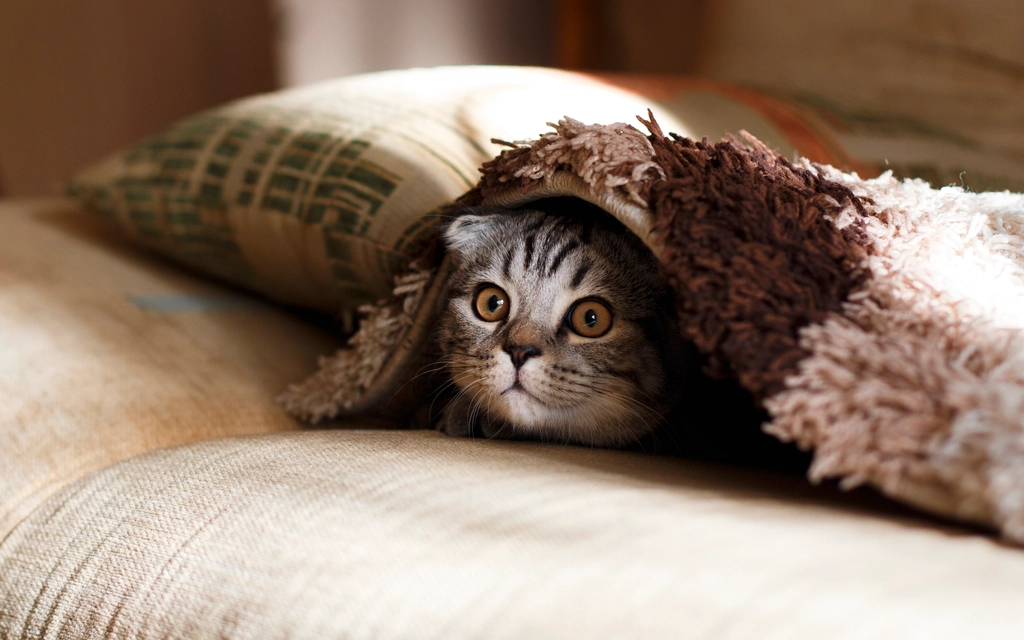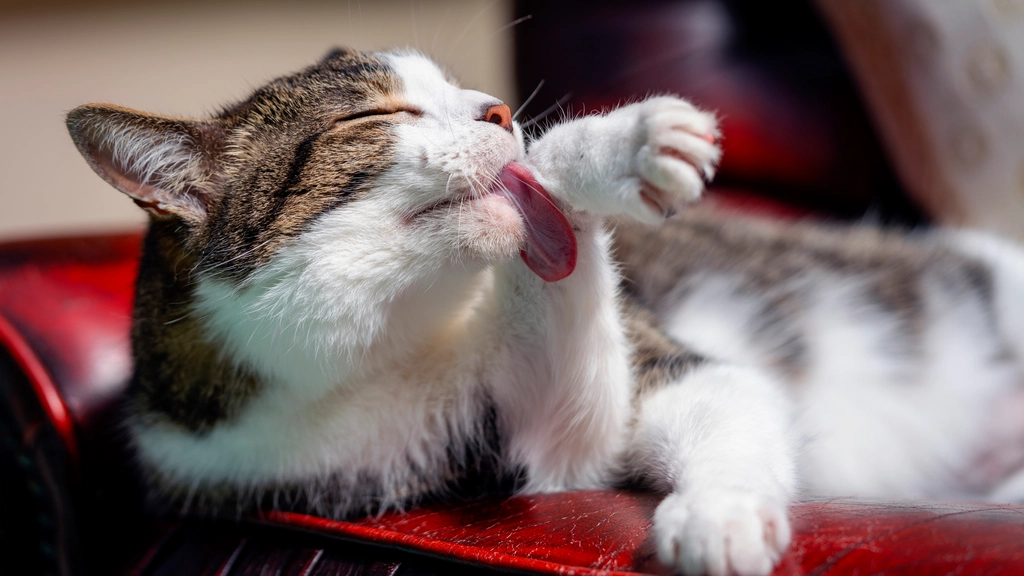Cats are enigmatic creatures with a rich tapestry of emotions woven into their everyday lives. For those who share their homes with these furry friends, understanding their emotional shifts is vital for ensuring their well-being. Cats, like humans, experience a spectrum of emotions that can manifest in various ways, from their body language to their vocalizations. Recognizing these changes can help pet owners address any underlying issues and strengthen the bond they share with their feline companions.
Sudden Aggression
One of the most noticeable emotional shifts in cats is sudden aggression. If a usually docile cat begins to hiss, scratch, or bite without apparent reason, it might be a sign of underlying distress. This change can be attributed to pain, fear, or even territorial disputes. For instance, if a new pet has been introduced into the household, your cat may feel threatened and respond aggressively. It’s essential to observe the context in which the aggression occurs. Is it during feeding times, when someone new enters the room, or when touched in a particular area? Identifying the trigger can help in addressing the root cause of the aggression, ensuring both the cat and its surroundings remain safe.
Excessive Meowing
While cats are known for their purring and meowing, a sudden increase in vocalization can indicate an emotional shift. If your cat becomes more vocal than usual, they may be trying to communicate discomfort or anxiety. Just as a baby cries for attention, a cat meows to express needs or concerns. Changes in their environment, like a new home or altered routine, can lead to increased vocalizations. Additionally, certain breeds are naturally more talkative, so it’s crucial to know what’s normal for your cat. Listening to the type of meow can provide clues: a low, drawn-out meow might signal frustration, while a high-pitched one could indicate excitement or distress.
Withdrawal or Hiding

If your social butterfly of a cat suddenly starts hiding or withdrawing from interactions, it might be experiencing stress or illness. Cats often retreat to a quiet, secluded spot when they’re feeling unwell, much like how humans seek solitude when under the weather. A change in their environment, such as new furniture or a different household member, can also prompt hiding behavior. It’s essential to approach a withdrawn cat gently, offering comfort and reassurance without overwhelming them. If the withdrawal persists, a visit to the vet might be necessary to rule out any health issues.
Changes in Eating Habits
A cat’s eating habits can be a direct reflection of its emotional state. A sudden increase or decrease in appetite might indicate stress or health problems. For instance, a cat that stops eating could be facing dental issues, gastrointestinal discomfort, or emotional distress. On the other hand, overeating or begging for food might be a sign of boredom or anxiety. Observing your cat’s eating patterns can provide valuable insights into its emotional well-being. If changes in appetite persist, it’s wise to consult with a veterinarian to ensure there’s no underlying health concern.
Excessive Grooming

Cats are known for their meticulous grooming habits, but when grooming becomes excessive, it might signal an emotional problem. Over-grooming can lead to bald spots or skin irritation and is often a response to stress or anxiety. Much like humans might bite their nails when nervous, cats might groom themselves as a coping mechanism. Changes in their environment, such as a new pet or altered routine, can trigger this behavior. It’s essential to identify the stressor and address it, whether by providing more playtime, ensuring a stable environment, or seeking advice from a veterinarian.
Lethargy or Increased Sleep
Cats are known for their love of sleep, but if your feline friend is sleeping more than usual, it might be a sign of an emotional or physical issue. Just as humans might sleep more when feeling down, cats can exhibit similar behavior when stressed or unwell. A change in sleep patterns can be triggered by numerous factors, including a new pet, changes in the household, or underlying health issues. It’s crucial to monitor their sleeping habits and consult with a vet if the lethargy persists. Ensuring a comfortable sleeping environment and addressing any potential stressors can help restore their usual energy levels.
Increased Vocalization at Night
If your cat becomes more vocal during nighttime hours, it might be an indication of anxiety or discomfort. Cats are crepuscular, meaning they are most active during dawn and dusk. However, if they’re meowing excessively at night, it could be due to loneliness, hunger, or even health issues like hyperthyroidism. Much like how a child might call out for a parent in the dark, a cat might vocalize for reassurance or attention. Ensuring they have a comfortable sleeping area, engaging in play before bedtime, and addressing any potential health concerns can help reduce nighttime vocalizations.
Sudden Affection or Clinginess
While some cats are naturally affectionate, a sudden increase in clinginess can indicate a shift in their emotional state. If your independent feline suddenly becomes a lap cat, it might be seeking comfort or security. This change can be due to stressors like a new environment, changes in routine, or even the absence of a family member. Just as humans might seek a hug during times of distress, cats might seek closeness for reassurance. Providing ample attention, ensuring a stable environment, and addressing any potential stressors can help your cat feel more secure.
Uncharacteristic Playfulness
A sudden burst of playfulness in your usually laid-back cat can be a sign of emotional excitement or restlessness. This behavior might be triggered by a change in their environment, such as new toys or altered routines. Much like how a child might become hyperactive in a stimulating environment, a cat might show increased playfulness during times of change. Engaging in interactive play sessions can help channel their energy positively. However, if the behavior seems excessive or destructive, it might be a sign of underlying anxiety or boredom.
Changes in Litter Box Habits
One of the most telling signs of an emotional shift in cats is a change in litter box habits. If your cat starts urinating or defecating outside the box, it might be trying to communicate distress or discomfort. This behavior can be due to stress, territorial disputes, or health issues like urinary tract infections. Much like how humans might express discontent through their actions, cats might use the litter box as a means of communication. Ensuring the litter box is clean, addressing any potential stressors, and consulting with a vet can help address this behavior.
In understanding these emotional shifts, cat owners can ensure their feline companions lead happy and healthy lives. Recognizing and addressing these changes not only strengthens the bond between cat and owner but also ensures the well-being of these beloved pets.

Suhail Ahmed is a passionate digital professional and nature enthusiast with over 8 years of experience in content strategy, SEO, web development, and digital operations. Alongside his freelance journey, Suhail actively contributes to nature and wildlife platforms like Feline Fam, where he channels his curiosity for the Feline into engaging, educational storytelling.
With a strong background in managing digital ecosystems — from ecommerce stores and WordPress websites to social media and automation — Suhail merges technical precision with creative insight. His content reflects a rare balance: SEO-friendly yet deeply human, data-informed yet emotionally resonant.
Driven by a love for discovery and storytelling, Suhail believes in using digital platforms to amplify causes that matter — especially those protecting Earth’s biodiversity and inspiring sustainable living. Whether he’s managing online projects or crafting wildlife content, his goal remains the same: to inform, inspire, and leave a positive digital footprint.





